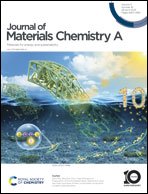Recent progress and perspectives on cation disordered rock-salt material for advanced Li-ion batteries
Abstract
Over the past decades, the utilization of Li-ion batteries has provided the benefits of high energy and power density and can be used in a variety of applications, including electric vehicles, large-scale energy storage, and the power grid. Yet, to meet the requirements for a more carbon-neutral society, the fast development of LIBs with lower cost, even higher energy density and power density, and greater safety on charging–discharging is expected. Recently, cation-disordered rock-salt (DRX) has attracted great attention since it can deliver a large capacity to surpass the capacity bottleneck of the current layered structure materials. However, promising cathode materials are now facing many challenges including fast capacity fading, intricate material synthesis, as well as the complex charge storage mechanism, which hinder their further applications. In this review, a comprehensive overview of the recent process of DRX materials is provided based on the compositional structure, lithium storage mechanism, electrochemical behaviour, and modification strategies. The remaining problems are also discussed from the perspective of paving the way for material design. We hope that this review can provide some insight into DRX cathode materials and inspire the fast development of Li-ion batteries.

- This article is part of the themed collections: Journal of Materials Chemistry A Recent Review Articles and #MyFirstJMCA


 Please wait while we load your content...
Please wait while we load your content...